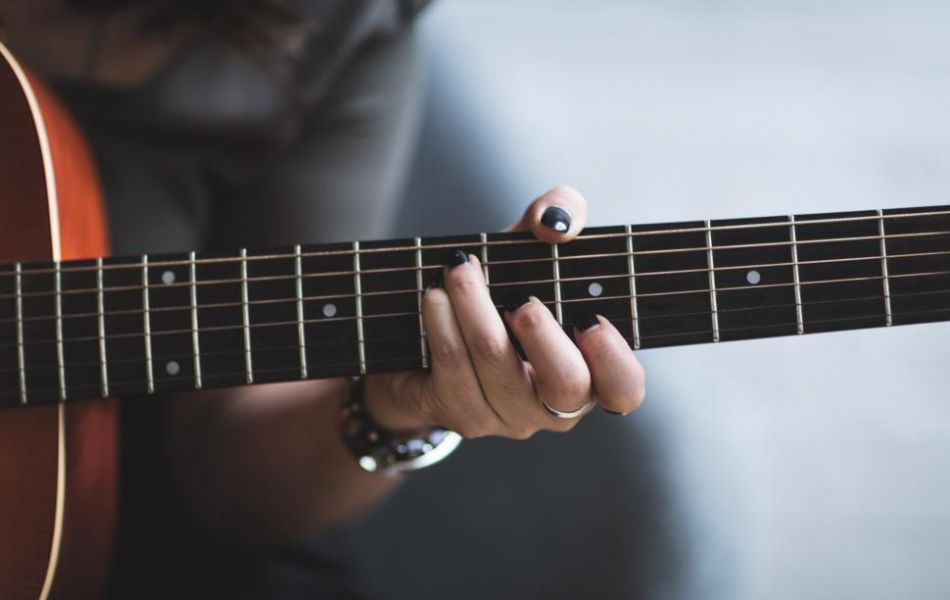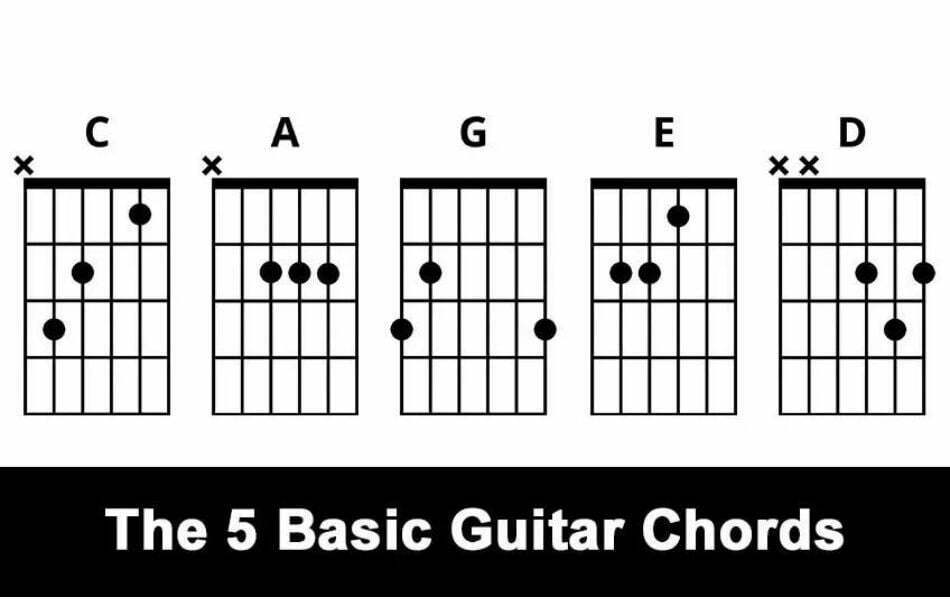When learning to play guitar, it is important to familiarize yourself with guitar music terminology. By understanding and mastering these essential guitar words, you can improve your skills and enhance your guitar-playing abilities. While working with a professional music teacher is beneficial, you can also take the initiative to study and learn guitar terminology for beginners independently.
Contents
Fretboard
The fretboard is one of the must-know music terms. It (also known as the fingerboard) is the front surface of the guitar neck where the musical notes are placed on the frets. It is usually made of wood, such as rosewood, maple, or ebony, and provides a smooth surface for guitarists to press down on the strings and produce sound.
The fretboard is where guitarists perform fretting, pressing the strings against specific frets, and sliding along the strings to produce different notes and sounds. Understanding the fretboard helps guitarists navigate and play the musical notes accurately on the guitar.

Fretboard Diagram
People use fretboard diagrams – a visual representation of the guitar’s fretboard, typically used for educational purposes or to communicate specific chord shapes, scales, or musical patterns. This is a popular music term for guitarists.
It consists of a series of horizontal lines representing the guitar strings and vertical lines representing the frets. The dots or markers on the diagram indicate specific fret positions where the player should place their fingers.
Fretboard diagrams are often used to illustrate chord fingerings, showing which fingers to place on which strings and frets to play a particular chord. They can also be used to demonstrate scale patterns or note positions for improvisation or melody playing.
Fretboard diagrams provide a visual aid for guitarists to understand and learn different chord shapes, scales, and musical patterns, making it easier to navigate the fretboard and play music on the guitar.
Music terminology on playing guitar technique
Tuning
Guitar tuning is the process of changing the pitch of each string to produce the desired notes. The most popular tuning for the guitar, known as standard tuning, or EADGBE, provides the basis for many songs and guitar skills.
The following pitches are what the guitar strings are tuned to in conventional tuning:
- 6th string (thickest): E
- 5th string: A
- 4th string: D
- 3rd string: G
- 2nd string: B
- 1st string (thinnest): E
You can use the guitar tuner app to tune strings more easily. Guitar Tunio is the best free guitar tuner app for iOS and Android. This tool offers guitarists a wide range of tuning possibilities, including both normal tuning and a variety of alternate tunings, including drop c, open g, drop a, half step down, and others.

Chord
A chord refers to the combination of three or more notes played simultaneously. Chords are formed by pressing down specific combinations of strings and frets on the guitar neck.
There are various types of chords music terms commonly used in guitar playing, including:
Open Chords: These are chords that involve playing open strings (unfretted) along with fretted notes. Examples of open chords include the C major, G major, and D major chords.
Barre Chords: Barre chords involve using one finger, usually the index finger, to press down multiple strings across a single fret. Common barre chords include the F major, B minor, and E major chords.
Power Chords: Power chords are two-note chords consisting of the root note and the fifth interval. They are commonly used in rock, punk, and metal music for their raw and powerful sound.
Major and Minor Chords: Major chords have a bright and happy sound, while minor chords have a more somber and melancholic quality. Major chords are often denoted by a capital letter (e.g., C major), and minor chords are denoted by a lowercase letter (e.g., A minor).
Seventh Chords: Seventh chords add an extra note to the basic triad, creating a richer and more complex sound. Common seventh chords include the dominant 7th (e.g., G7) and major 7th (e.g., Dmaj7) chords.
Chord Symbol
Here are some examples of chord symbols commonly used in music:
- C: Represents a C major chord.
- Am: Represents an A minor chord.
- G7: Represents a G dominant 7th chord.
- Dm7: Represents a D minor 7th chord.
- Fmaj7: Represents an F major 7th chord.
- E7b9: Represents an E dominant 7th chord with a flat 9th.
- Bm/A: Represents a B minor chord with an A in the bass.
- C#m7b5: Represents a C# minor 7th flat 5 chord.
- G/B: Represents a G chord with a B in the bass.
- D/F#: Represents a D chord with an F# in the bass.
These are just a few examples, and there are many more chord symbols used to represent different chord qualities, alterations, inversions, and extensions. The specific chord symbol used can vary depending on the style, genre, and musical context.

By acquiring a solid understanding of these guitar music terms and honing your fundamental techniques, you will be equipped to tackle greater challenges and perform more intricate music. To expand your knowledge and skills in guitar playing, consider exploring additional articles available on Guitartunio.
